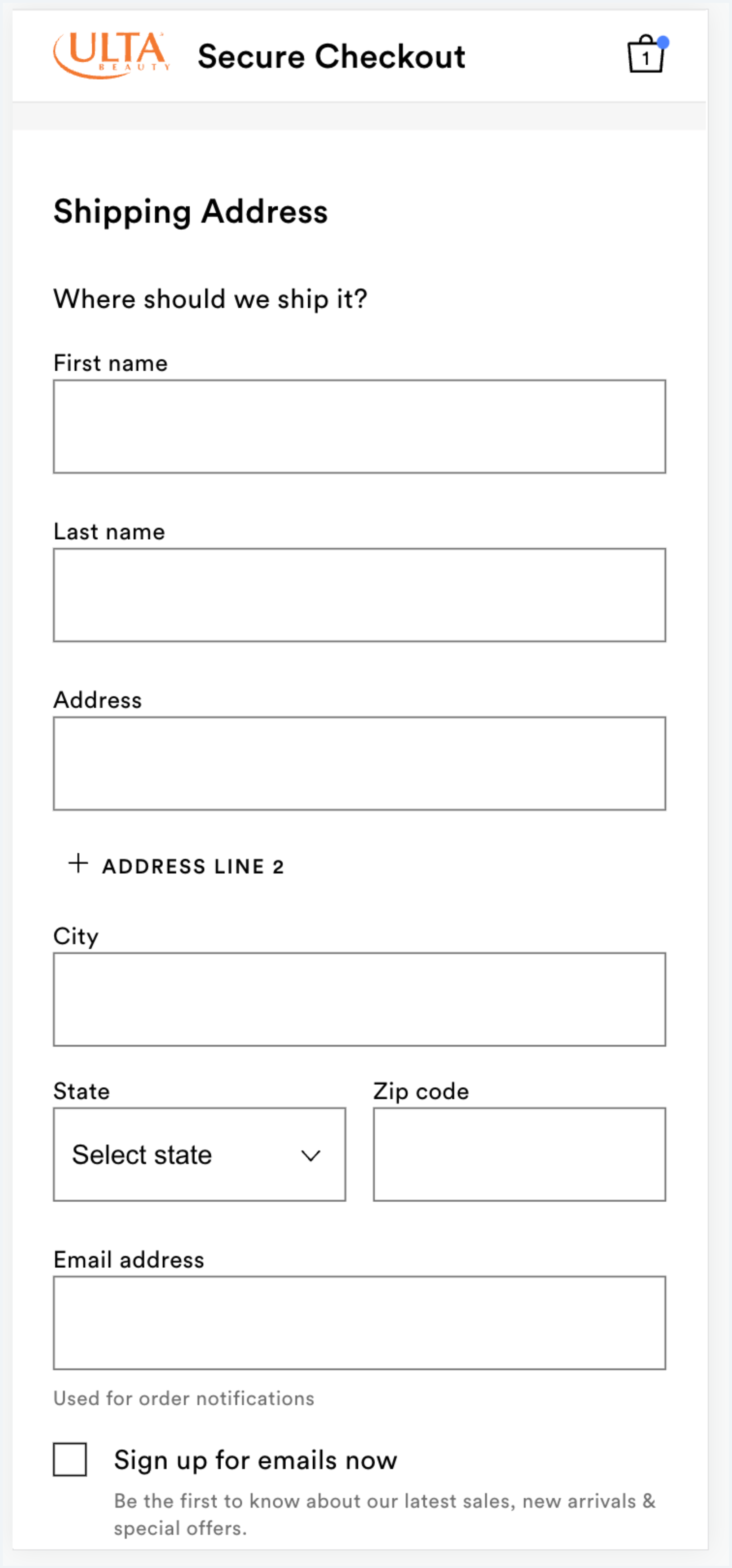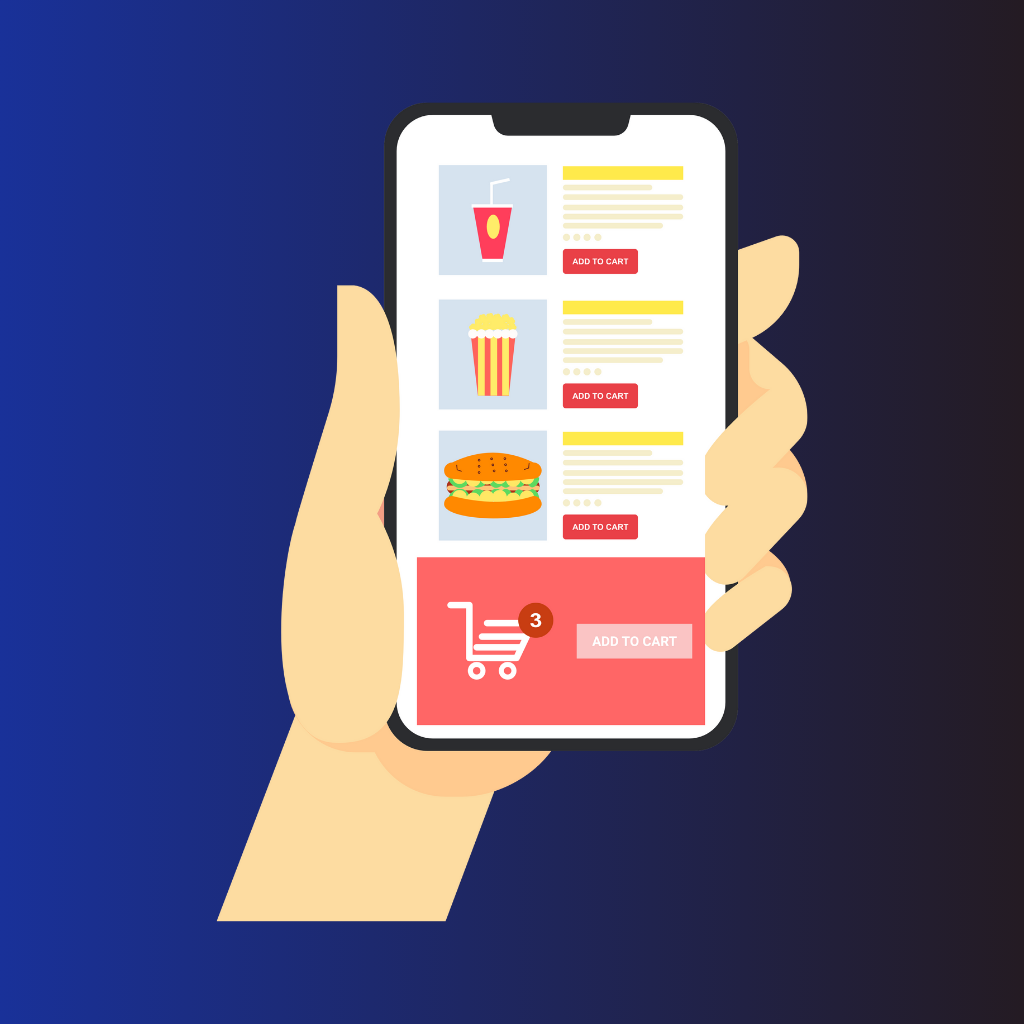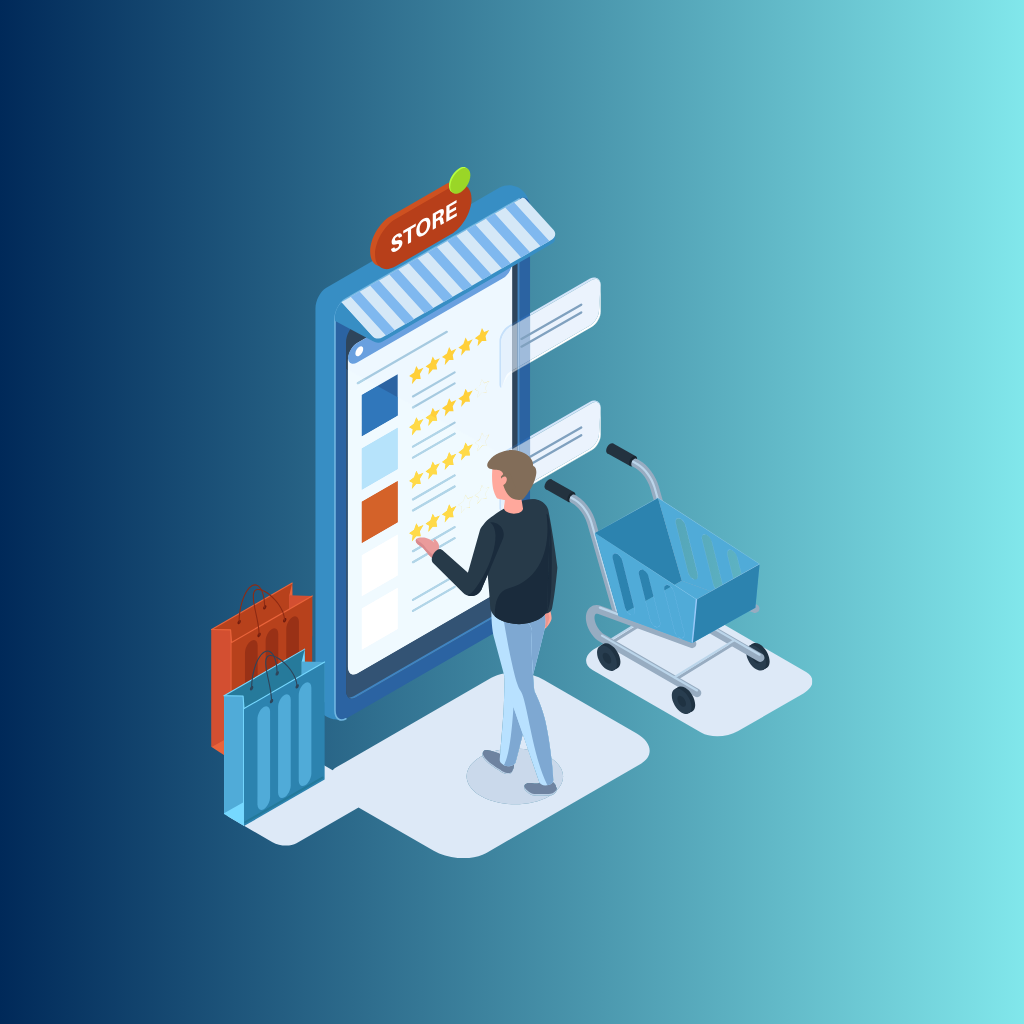The checkout process is the final frontier in an e-commerce journey, a pivotal moment where potential sales transform into confirmed transactions. However, it's also a stage fraught with potential pitfalls, where minor hiccups can lead to cart abandonment. In this guide, we'll delve deep into the nuances of the checkout process, offering insights and best practices to ensure a seamless experience for users, thereby bolstering conversion rates and cultivating lasting customer relationships.
a) General practices
Progress Indicators:
Incorporate a progress bar or step indicators to guide users through the checkout process. This clarity can help set expectations, making users more likely to complete their purchase.
Minimize Distractions:
The primary goal of the checkout page should be to facilitate a smooth purchase. Ensure the page is devoid of unnecessary distractions, such as excessive promotions or unrelated links, which can divert attention and prolong the process.
Provide Assistance:
Anticipate potential questions or issues users might encounter during the checkout process. By offering easy access to customer support or frequently asked questions, you can alleviate concerns and reduce the likelihood of cart abandonment.
Avoid Pop-ups:
Refrain from using pop-ups, especially for essential steps like billing information input. They can be perceived as intrusive and might not render correctly across all devices, potentially hindering the user experience.
a) Login or Continue as Guest
The choice between "Login" and "Continue as Guest" during checkout is a critical juncture for users. Streamlining this step is pivotal in enhancing the checkout experience and bolstering conversion rates. Here are refined practices for optimizing this segment of the checkout process:
Login Optimization:
Presenting both the "Login" and "Continue as Guest" options with clarity is crucial. Users should swiftly discern and navigate through them. Highlighting the benefits of logging in, such as expedited future checkouts, order tracking, or the ability to save items to a wishlist, can be advantageous. However, it’s vital to maintain a balance to avoid appearing overly insistent.
Should users choose to create an account, simplifying this process is key. Enabling quick logins through social media or email can be beneficial. Clear, immediate feedback for login errors is essential, and in instances of incorrect password entries, easily accessible password recovery options should be available.
If a user opts to log in or register midway through shopping, ensuring the preservation of their cart items is crucial to avoid restarting the selection process. Providing assurances regarding the security of login details and other personal information can build trust. Displaying security badges or incorporating phrases like "Secure Checkout" can reinforce this sense of security.
Guest Checkout Optimization:
Offering a guest checkout option is non-negotiable. Mandating account creation can serve as a substantial deterrent, potentially leading to cart abandonment. The presence of a guest checkout option ensures users who are reluctant to create accounts can still complete their purchases, thereby reducing the likelihood of abandoned carts and missed sales opportunities.
b) Billing Information
Ensuring swift, accurate, and secure billing detail input is paramount for enhancing conversion rates.
Each field should be distinctly labeled. For instance, fields should be marked as "Name on Card," "Billing Address," "City," and "Postal Code." If there's potential for confusion, consider using placeholder text or tooltips to offer further guidance.
Incorporate real-time validation for each input field. This immediate feedback can help users correct any errors on the spot, preventing potential issues later in the process.
Facilitate the process for returning customers by enabling browser auto-fill for billing details. This not only expedites the checkout but also minimizes the risk of input errors.
Streamline the billing input process by requesting only the essential details. Reducing the number of fields can decrease the likelihood of cart abandonment.
To instill confidence in users about the security of their information, prominently display security indicators such as badges, SSL certificates, or other symbols of trust. Reinforce this with reassuring statements like "Your information is encrypted and secure.”

c) Shipping method and information
Shipping method and information play a crucial role in a user's decision to finalize a purchase.
Present all available shipping options, complete with their associated costs and estimated delivery times. An example would be: "Standard Shipping - $5 (3-5 business days)."
For user convenience, set the default shipping option to the one that's most frequently selected or offers the best value.
Give users the ability to estimate their shipping costs by entering their postal code or address early in the checkout process. This transparency can prevent unexpected costs and reduce cart abandonment.
Highlight any promotional offers, such as free shipping for orders that exceed a specific amount. If a user is close to reaching that amount, indicate how much more they need to add to their cart to benefit from the offer.
To streamline the input process, merge the shipping and billing address forms. Include a checkbox option labeled "Same as Billing Address" to eliminate the need for redundant data entry.
Lastly, emphasize the availability of trackable shipping options. Assure customers that they will be provided with a tracking number once their order is on its way. This not only offers peace of mind but also enhances the overall shopping experience.
d) Payment information
Ensuring a seamless payment process is paramount to a successful checkout experience.
Provide users with a diverse range of payment options, catering to their preferences. This should encompass credit/debit cards, digital wallets like PayPal and Apple Pay, bank transfers, and any other payment methods that resonate with your audience.
For quick identification, showcase easily recognizable icons corresponding to each payment method. This visual cue aids users in swiftly selecting their desired payment option.
Based on user behavior, if one payment method stands out as a favorite, consider making it the default choice to expedite the process.
Security is paramount when dealing with financial transactions. Reassure users of the safety of their payment details by showcasing security badges, employing HTTPS protocols, and elucidating on encryption measures in place.
Incorporate real-time validation for payment details. For instance, as users input their credit card number, provide immediate feedback on its format.
In the event of a payment hiccup, such as a card being declined, it's essential to clearly communicate the issue and suggest alternative solutions or payment methods.
For those who have created an account, introduce the option to securely store their payment information. This facilitates quicker checkouts in the future.
For loyal customers who have opted to save their payment details, a one-click purchase option can further streamline their shopping experience, making it almost instantaneous.
Lastly, always have a support system in place. Whether it's through customer support or a comprehensive FAQ section, ensure users have a resource to turn to if they encounter challenges or have queries during the payment phase.
e) Review Order and Confirm
The "Review Order and Confirm" phase is a pivotal juncture in the checkout process, serving as the user's final opportunity to verify their purchase before commitment.
Begin by presenting a succinct summary of the items slated for purchase. This should encompass product names, quantities, and other pertinent details such as sizes and colors.
Next, furnish a comprehensive cost breakdown. This should delineate individual product prices, applicable taxes, shipping charges, any discounts availed, and the cumulative total.
Facilitate any last-minute changes by enabling users to effortlessly modify their cart, adjust shipping particulars, or switch payment methods, all from within the review page. This eliminates the need for users to tediously retrace their steps.
To bolster user confidence, incorporate diminutive images or thumbnails of the carted products, offering a visual affirmation of their impending purchase.
Reiterate the security of the transaction by showcasing pertinent badges or icons, assuring users of the safety of their financial details.
Accentuate the final total, ensuring users are fully apprised of the exact amount they will be charged.
The "Place Order" or "Confirm" button should be conspicuous, signaling to users that this action culminates the purchase process.
Incorporate a transparent mechanism for users to acknowledge terms of service or return policies. This could be a checkbox or link, but it's imperative that it appears forthright and not concealed.
Upon order confirmation, it's crucial to provide instantaneous feedback. Whether it's a loading icon or a brief animation, users should be aware that their order is in the processing phase.
At this juncture, the emphasis should squarely be on concluding the present transaction. Avoid diverting attention with new product suggestions or upsells.
Lastly, always ensure users have a recourse in case of uncertainties. Whether through a robust FAQ section or direct customer support, provide avenues for users to address any lingering queries or concerns.
f) Confirmation page
The Confirmation page, also known as the "Thank You" page, marks the culmination of the checkout journey. Beyond merely confirming the transaction, it serves as a platform to elevate the customer experience, foster continued interaction, and cultivate brand loyalty.
Begin with a definitive confirmation statement. Phrases like "Thank you for your purchase!" or "Your order is confirmed!” resonate well.
Detail the order, encapsulating product specifics, quantities, individual prices, and the aggregate amount remitted.
Incorporate a distinct order number for the transaction, facilitating easier reference in subsequent interactions.
Outline the payment modality employed and the exact sum debited.
Highlight pertinent shipping details, encompassing the anticipated delivery timeframe, the chosen shipping mode, and the designated delivery locale.
Ensure customers have straightforward avenues to reach out for support or to address any queries about their order.
Illuminate the ensuing steps, be it an impending email confirmation or the mechanics of shipment tracking.
Encourage Continued Engagement:
Introduce related products or showcase items that enjoy frequent combined purchases.
Promote newsletter subscriptions to keep customers abreast of updates.
Solicit feedback, inviting customers to share insights about their shopping expedition.
Facilitate social media sharing, allowing customers to broadcast their purchase or experience.
Highlight any loyalty schemes, updating patrons on accrued points or nudging newcomers to enroll.
Facilitate seamless navigation for those keen on further shopping or delving into different website segments.
To express gratitude and incentivize return visits, consider proffering a discount code or voucher for subsequent purchases.
Conclusion
The checkout process, while seemingly straightforward, is a complex dance of user experience, trust-building, and efficiency. By implementing the best practices outlined in this guide, businesses can not only ensure a smooth transactional experience but also lay the foundation for lasting customer loyalty. Remember, every touchpoint, from the choice to log in or continue as a guest to the final confirmation page, plays a crucial role in shaping the user's perception and decision-making. By prioritizing user-centric design and clear communication, businesses can elevate their checkout process, leading to increased conversions and sustained growth.


